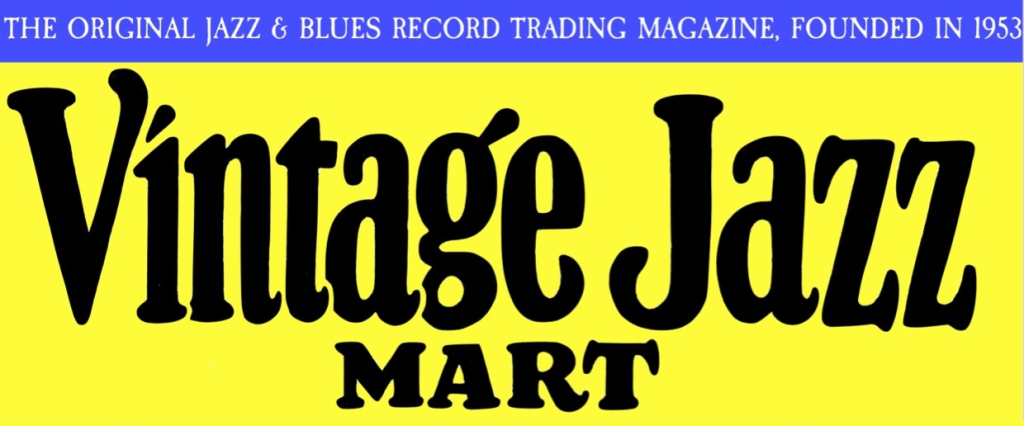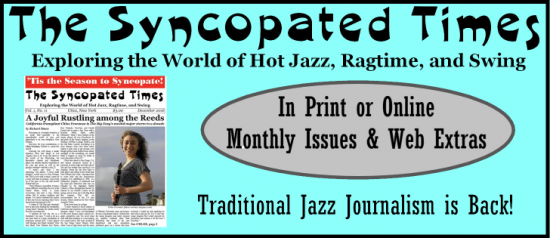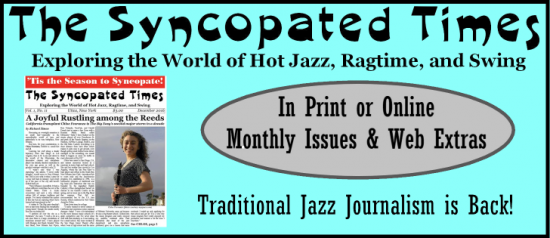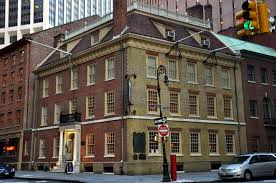Imagine an improvising musician, a dazzling stylist, whose recorded works add up to perhaps forty minutes. Dead of tuberculosis at 42. Admired by Les Paul and Frank Trumbauer, Danny Barker, Peck Kelley, Paul Whiteman, and Leo Kottke. “Slightly deformed at birth,” blind in one eye. Kept the best NOLA company.
Plain:

and Fancy, both from 1931:

and here’s some aural evidence:
and two ballads, rich and pensive:
Edwin “Snoozer” Quinn recorded in his prime but none of his solo recordings were ever issued. (He is audible, here and there, but never out front.) Those solos and duets we possess, a dozen sides, were informally done by cornetist Johnny Wiggs, in Snoozer’s hospital room, some months before his death.
We have a brief film of Snoozer playing solo in 1932, his hands graceful and fluid, but it is silent (as a footnote, the film was made by photographer-guitarist Charles Peterson, who gave us so much of the jazz world in still photographs):
Snoozer Quinn might have remained one of the most shadowy figures in jazz, an art form that has its share. And until recently, although the dozen recordings he made in 1948 were available on lp and CD, knowledge of him was scant.
Both he and his music deserved careful, deep, serious documentation. They have it now, splendidly, in this large-format book, 104 pages without filler or bloat:

Here is a comprehensive overview of this book. And, if you’re like me, whose immediate instinct was “How can I buy a copy?” visit here: you can purchase a paperback ($22.00) or an e-book ($14.99).
This book is extraordinarily satisfying: I am a severe reader and I stumbled over no flaws. Many jazz books of late are dense with theory and theorizing (we watch the author’s speculations about matters only tangentially related to music or biography overwhelm the presumed subject). Many are recyclings of others’ speculations or reminiscences. Ground well-and-thoroughly covered, leftovers presented as dinner, pick your metaphor. Given that, first-hand narrative about a figure who has been mysterious is precious, as is new information.
Perhaps you never thought your bookshelf needed a book all about Snoozer Quinn, but this one is entrancing, not only as his detailed portrait, but as a model of humane scholarship. It is candid and plain-spoken, full of surprises and anecdotes, stories from people who were there.
Here’s a quick tour. Katy Hobgood Ray, musician and deep researcher, is Snoozer Quinn’s great-great niece, which means that she knew of him in different contexts than even the most devoted jazz researcher would have. It also means that she has access to wonderful photos of Snoozer from the beginning to the end of his life, as well as the bands he played with. Those photographs, even without substantive text, would be an unequalled story of a life.
The book is divided into three sections. The first, after an introduction by guitarist Steve Howell, is a biography of Snoozer, the writing clear and evocative, followed by those photographs. The second is eight Snoozer solos, transcribed for guitarists to work at — thankfully, they can hear the recordings as stars to shoot for. The last, to me the most valuable, is a collection of recollections by Snoozer’s friends and colleagues.
Snoozer’s life, from one angle, is tragedy: tuberculosis and alcoholism, missed chances and benevolences that turned out all wrong. Paul Whiteman’s misguided fascination with the guitarist is a sad, almost unbelievable story. Genius, almost undocumented. But from another angle, he remains a marvel on the basis of the scant evidence, and those who heard him were astonished and remained so. The tale of his life is told through sharply realized evidence: oral histories from people who knew him and played alongside him, from members of the Quinn family to jazz musicians famous and less well-known.
For guitarists, the center of this book will be the eight carefully-created transcriptions of Snoozer’s solos on the sides he did solo and with Johnny Wiggs. I’m not a guitarist, but Dan Sumner’s description of Snoozer’s tuning and the way the transcriptions were imagined, honed, and polished is very convincing.
The recollections and reminiscences that conclude the book are arresting in their intimacy. Musicians Godfrey Hirsch, Monk Hazel, Benjie white, Armand Hug, and of course Johnny Wiggs, speak with tenderness, awe, and humor of Snoozer and his place in the universe. A detailed discography (with biographical information and documentation) is the final flourish to a splendidly realized enterprise.
No stone is left unturned: on page 11 of this book you will learn, almost offhandedly, the source of “Snoozer” as a nickname. It was a compliment.
It’s a reviewer’s cliche-encomium to state that a book like this is so definitive that there never need be another on the subject. I agree. But I also hope that new discoveries will be made so that there will be a second edition. Snoozer, obscure, often admired but not treated kindly, deserves every celebration possible. As do Katy Hobgood Ray, Dan Sumner, and Steve Howell. Their collaboration is so very rewarding. This book is thrilling in so many ways.
On another note, a comic-linguistic postscript. I first encountered Snoozer around 1971 when I purchased the Fat Cat’s Jazz lp THE LEGENDARY SNOOZER QUINN, which contained a dozen tracks Wiggs (bless him forevermore) had recorded. I had never heard Snoozer or Johnny Wiggs, but was fascinated by the air of mystery that surrounded the music, enough to spend money on a mysterious offering.
Al Rose’s liner note to that record offers a memorable crumb of awkward prose that I have never forgotten. Noting that cornetist Wiggs had not played in some time, Rose wrote, Wiggs, for the occasion, took his lip out of a quarter-century of mothballs, more to put Snoozer at his ease than anything else, and blew on some of these cuts. Little rust had gathered in the superb cornet.
Yes, mothballs and rust. But I digress.
Don’t linger here: buy this book. And while you’re waiting for your copy to arrive, visit https://snoozerquinn.com/ — a fine preface to the book.
May your happiness increase!



























